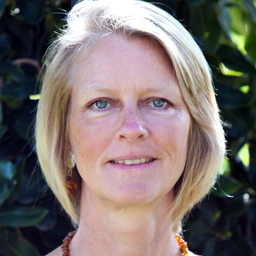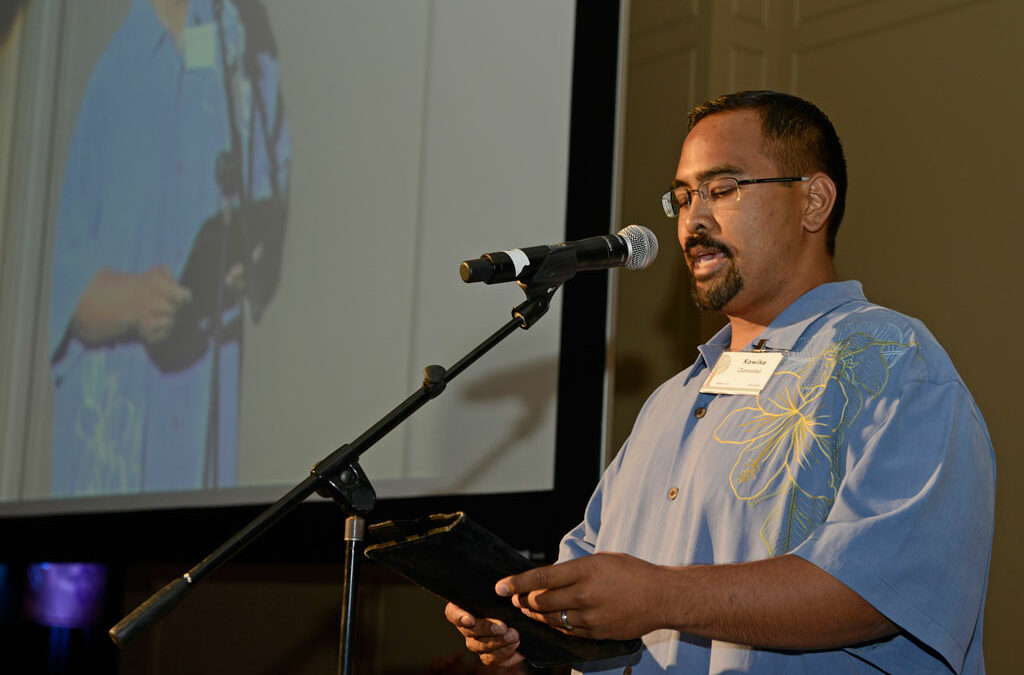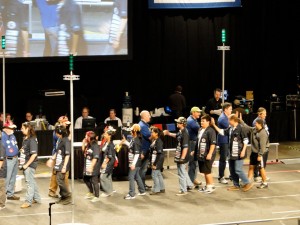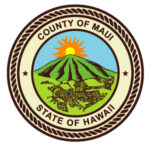
Jan 30, 2013 | Innovation
 Maui Economic Development Board is providing a chance to chat with a successful entrepreneur at the next event of its ongoing Innovation Series. Karin Frost, an Upcountry resident and founder of ERGObaby carrier, has agreed to headline what’s billed as a not-to-be-missed conversation with her audience. The event is free and open to the public.
Maui Economic Development Board is providing a chance to chat with a successful entrepreneur at the next event of its ongoing Innovation Series. Karin Frost, an Upcountry resident and founder of ERGObaby carrier, has agreed to headline what’s billed as a not-to-be-missed conversation with her audience. The event is free and open to the public.
Born in Denver, Colorado, Frost attended La Université de la Sorbonne in Paris before graduating from the University of Minnesota in 1984 with a Bachelor of Arts degree in French and Danish. Her dream of designing clothes led to her obtaining a master’s degree in design in 1988 from the University of Minnesota. Eventually, travels led Frost to live on Maui and design resort wear. Out of a personal need and with her design background, Frost created the ERGObaby carrier. She believed that her design offered ergonomic and psychological benefits to both parent and baby. Frost hand-sewed the first 50 carriers, but demand quickly exceeded her ability to make the product herself. In 2010, Frost agreed to sell her company to Compass Management Group. Business was built to up to $30 million in annual revenue and as many as 40 employees, 20 in the United States and 20 in Europe. After the sale, Frost continues to work as the chief design officer and serves as a board member.
| What |
A Conversation with Karin Frost |
| Where |
Iao Theater in Wailuku |
| When |
Wednesday, February 6, 2013
Registration: 5:00 p.m.
Program: 5:30-7:30 p.m. |
| Cost |
FREE |
| RSVP |
To reserve a seat, call Cari Taylor, 875-2336, or email: cari@medb.org. |
Dec 26, 2012 | Community, Innovation
 With Christmas presents unwrapped, Maui’s youth turned toward sharing the gifts they’d like to see unfold in their community in 2013.
With Christmas presents unwrapped, Maui’s youth turned toward sharing the gifts they’d like to see unfold in their community in 2013.
On education:
“We should pay our teachers more, much more. Teachers are the key to the future for all of us,” said Duncan, 15, of Haiku. Demi, 18, of Wailuku seems to agree that teachers are key to improving education. “I would like to see better quality teachers get hired over quantity so that the money can be spent on keeping kids in school.” Lola, 16, of Kihei added, “I would like to see Maui widen the opportunities for students in a variety of interesting fields such as engineering, literature and the sciences. I don’t think there are enough AP (Advanced Placement) classes in my school compared to other schools on the Mainland.”
On cultural preservation:
Kaitlin, 17, of Upcountry, Maui remarked, “Makawao just got a new bus stop with cowboys on top. Little things like this are easy ways to show and emulate my hometown’s country culture.” Alisha, 17, of Paia, said the variety of cultures on island makes Maui a unique place to live and worth preserving. “To preserve this unique culture, the state and county should encourage and support organizations that promote the education of our island culture.” Lola felt that Hawaiiana courses help to bring cultural awareness. But the discussion needs to expand. “I feel as though Hawaii would benefit toward having educational conversations in the injustices from the past. We should be talking about how to reconcile the past while dealing with our present and moving forward as a community.”
On protecting the natural environment:
Duncan suggested, “Do everything we can to preserve the reefs before they die and plant more forests to help the watersheds.” Lola suggested government officials ensure easy access to beaches and the mountains. “I really enjoy our clean beaches and our safe hiking trails. We really need to keep it up.” Kaitlin said she’s been privileged to grow up on Maui and see “the beauties Mother Earth intended us to see. It is the duty of the Maui community to keep its ocean blue and its mountains green by limiting our pollution and using resources wisely.”
Happy New Year 2013!

Dec 5, 2012 | Innovation
 Appearing as a speaker at Maui Economic Development Board’s Innovation Series, University of Hawai‘i President M.R.C. Greenwood rallied local leaders to support investment in the HI2 Innovation Initiative. The initiative, according to Greenwood, will act as an economic fuel cell, generating new discoveries, creating thousands of jobs and putting more money into Hawaii’s economy, she said. Greenwood said the university’s research work already attracts $500 million to the state’s economy. And, she said, that means “jobs, lots of jobs, lots of well-paying jobs.”
Appearing as a speaker at Maui Economic Development Board’s Innovation Series, University of Hawai‘i President M.R.C. Greenwood rallied local leaders to support investment in the HI2 Innovation Initiative. The initiative, according to Greenwood, will act as an economic fuel cell, generating new discoveries, creating thousands of jobs and putting more money into Hawaii’s economy, she said. Greenwood said the university’s research work already attracts $500 million to the state’s economy. And, she said, that means “jobs, lots of jobs, lots of well-paying jobs.”
However, Greenwood said research and development only makes up about 3 percent of Hawai‘i’s economy, which is dominated by spending in government, tourism, real estate and the military. To illustrate Hawai‘i’s potential for growth, she pointed to San Diego, which in the 1960s, “looked very much the way we do today,” with an economy based on the same sectors. But since then, San Diego, which is made up of seven counties, has pursued research and development aggressively, so today, makes up 14 percent of its economy. “They have clearly gotten their act together,” she said. If Hawai‘i were to pursue the same course, particularly if government were to join businesses and the community in supporting the university’s research and development work, then Hawai‘i could draw $750 million to $1 billion in research and development funding as well as start-up and spin-off companies, she said. “It needs to be a creature of the community,” she said, referring to HI2.
For Maui, the university is proceeding with development of the ATST solar telescope atop Haleakalā, which Greenwood said, would bring millions of dollars into the island’s economy as well as “generate a lot of new technology and a lot of new ideas.” The University of Hawai‘i is poised to be the first university in the country to have satellite launch capacity, she said. Greenwood pointed to development of clean energy, new agriculture and cancer research as areas of opportunity for the university.
MEDB’s Innovation Series is expected to host in 2013 Dr. Hank Wuh, surgeon and inventor; Karin Frost, a Maui resident and inventor of the Ergo Baby Carrier, which produces baby products; and video game designer and environmental philanthropist Henk Rogers.

Sep 5, 2012 | Innovation

Moloka‘i elementary, middle and high school students are on the cutting-edge of technology, thanks, in part, to teacher Kawika Gonzales and to grants from Maui Economic Development Board’s Ke Alahele Education Fund. For the past two years, Gonzales has been teaching the students computer-aided design in a weekly after-school program. Gonzales told supporters at this year’s annual Ke Alahele dinner: “Through your support this past year, we have upgraded our program of Google Sketchup to Google Sketchup Pro, not only for our island, but for students throughout the entire state.” He added, “Students are designing rooms, houses, objects, towns and even entire cities to scale!”
Gonzales said that this past summer he was able to teach a Google Sketchup class on Maui to middle and high school students from around Maui County. “Even as beginners, they were already making fully furnished homes and designing bridges,” he said. Gonzales said the Google program increases students’ engagement and makes learning exciting. “Learning about geometry, measurement and fractions becomes fun when we are able to work with programs such as those funded by this organization,” he said. “As an educator, it makes my job a lot easier when I have the right tools to expand our students’ learning.”
This year, the Ke Alahele Fund raised a record $338,046 at its annual dinner event held Aug. 18 at the Grand Wailea Resort. Gonzales said he would have not been able to teach technology without MEDB support. “I think my job is to give the students opportunities to use their gifts, their talents … I’m able to do that because of community support.” Having taught for 12 years, Gonzales said he has grown as an educator who started with producing and editing videos to developing the website for Kaunakakai Elementary School. He said he’s proud of how students on Moloka‘i are progressing. “They have a flair for it, a natural ability, a natural talent for technology.” For more information about MEDB and its Ke Alahele Fund, call 875-2300 or visit www.medb.org.

Feb 22, 2012 | Innovation
 National Engineering Week is well on its way here on Maui where more than 75 students are immersed in a variety of opportunities to explore the field of engineering. This is the 11th year in which Maui Economic Development Board’s Women in Technology program has taken the lead in coordinating the weeklong event that runs through this Saturday. Partners include the Air Force Research Laboratory, Hawaii Society of Professional Engineers Maui Chapter, the County of Maui and local engineering firms. With fewer than 5 percent of Hawaii’s engineers being women, National Engineering Week is important as it exposes young girls to engineering as a career.
National Engineering Week is well on its way here on Maui where more than 75 students are immersed in a variety of opportunities to explore the field of engineering. This is the 11th year in which Maui Economic Development Board’s Women in Technology program has taken the lead in coordinating the weeklong event that runs through this Saturday. Partners include the Air Force Research Laboratory, Hawaii Society of Professional Engineers Maui Chapter, the County of Maui and local engineering firms. With fewer than 5 percent of Hawaii’s engineers being women, National Engineering Week is important as it exposes young girls to engineering as a career.
Introduce a Girl to Engineering Day has more than 250 middle school students participating from Maui County. An engineering expo event will feature 40 students in hands-on activities that expose them to various engineering fields. Other activities include Maui Electric Co. hosting 12 girls on a tour of their central plant, a career shadowing with MECO engineers and an activity that shows them how to build their own circuit boards. In the County’s Wastewater Reclamation Division, 10 girls are poised to learn about civil engineering and the important role of a wastewater treatment plant. Iao Intermediate School student Christine says it all: “Going to an engineer’s worksite and seeing what a big role they have in our community inspired me to pursue engineering as a career.”
Engineering In the Middle competitions are also in the mix including Popsicle Bridge Building and Marshmallow Launcher contests. There are five participating schools — Lokelani Intermediate, Maui Waena Intermediate, Iao School, Kalama Intermediate and Molokai Middle School. Winners will go on to compete at the University of Hawaii at Manoa’s Jr. Engineering Expo in March. For information about the Women in Technology program, please visit www.womenintech.com or contact Mapu Quitazol at 875-2343 or at mapu@medb.org.
Jun 2, 2011 | Innovation
 As announced by Hawaiian Electric Co. and reported in The Maui News (May 19, 2011), Maui has been selected as the site for a “smart grid” renewable energy demonstration project, with an investment of approximately $37 million from the Japan-based New Energy and Industrial Technology Development Organization (NEDO).
As announced by Hawaiian Electric Co. and reported in The Maui News (May 19, 2011), Maui has been selected as the site for a “smart grid” renewable energy demonstration project, with an investment of approximately $37 million from the Japan-based New Energy and Industrial Technology Development Organization (NEDO).
Japanese and American energy partners will collaborate on the multimillion dollar project, which is aimed at improving integration of variable renewable energy resources, such as solar and wind power, and preparing the electric system for widespread use of electric vehicles.
The organizations partnering on the project include: the U.S. Department of Energy; the Hawaii Department of Business, Economic Development and Tourism (DBEDT); the Hawaii Natural Energy Institute at the University of Hawaii; Hawaiian Electric Company; Maui Electric Company; and NEDO, an entity under the government of Japan’s Ministry of Economy, Trade and Industry.
The six Japanese companies that will work with U.S. project partners to develop and install smart-grid technologies on Maui include Hitachi Ltd., Hewlett-Packard Japan Ltd., Mizuho Corporate Bank Ltd., Sharp Corp., JFE Engineering Corp. and Cyber Defense Institute Inc.
Installation of the smart-grid technology is expected to begin in late 2012, with the project becoming operational in 2013. The project is scheduled to run from 2013 to 2015.
“With its high levels of variable renewable energy, Maui is a perfect location to test these smart-grid technologies,” said Richard Rocheleau, director of the Hawaii Natural Energy Institute at the University of Hawaii. “Through this Japanese-U.S. partnership, we can demonstrate how these technologies can help solve Maui’s energy challenges and be used in other parts of the world, especially on other island systems such as ours.”
“Like Hawaii, Japan is looking for ways to better use clean energy on smaller electric systems that serve individual islands. By pooling our resources and our expertise, we can develop solutions that will help significantly increase our use of clean energy sources,” said Robbie Alm, Hawaiian Electric executive vice president.
Hawaiian Electric officials said that the project will include installation of smart controls in Kihei, South Maui, at the regional and neighborhood levels to improve integration of variable renewable energy resources, such as photovoltaic systems and controls to manage electric vehicle charging stations and battery storage systems. This NEDO project will also collaborate with an existing U.S. Department of Energy-funded project by installing the same smart control systems within the project site in the Wailea area of Maui.
The project is aimed at being a solution to one of the biggest challenges in integrating an existing power grid with renewable energy, which fluctuates depending on whether it’s windy or the sun is shining. Electric grids need a consistent, reliable source of power, which so far has been provided primarily through turbines driven by diesel or other fossil fuels.
“A smarter electric grid is a promising solution to one of the biggest challenges in deploying more renewable energy in Hawaii,” said Estrella Seese, acting energy program administrator for the state Department of Business, Economic Development and Tourism’s Energy Office. “Technical innovations such as smart-grid applications will increase the island grid’s capability to minimize the system reliability impact of interconnected renewable energy resources and can make Hawaii a model for other areas around the world that face similar conditions,” she said.
In addition, to help prepare the Maui electric grid for widespread adoption of electric vehicles, the project will use an advanced charging management system to connect Maui Electric Company system controls with charging stations island-wide, allowing Maui Electric to actively manage electric vehicle charging to balance generation and load. With this advanced system, Maui Electric can make better use of the wind and solar power on the island.
The project is part of the Hawaii-Okinawa Partnership on Clean and Efficient Energy Development and Deployment, which was signed by the U.S. Department of Energy; the Ministry of Economy, Trade and Industry of Japan; the state of Hawaii; and the prefecture of Okinawa in June 2010.

Mar 14, 2011 | Innovation

Baldwin Robotics team rocked this weekend at the FIRST Robotics Competition’s San Diego Regional tournament by making it to the finals. Although their alliance ultimately lost their final match, they did an outstanding job representing their school and Maui. You can see the final match here. Baldwin is team #2439.
Jan 19, 2011 | Innovation
 Maui’s technology sector, which employs about 2,000 people, provides the economy with healthy diversity and represents a sustainable strategy for further development, aligning with values voiced by the community through the Focus Maui Nui process. One of the leaders in this area of “clean” growth is the company founded in 1997 by Vaughn Vasconcellos—Akimeka, LLC. This award-winning global enterprise fills Information Technology (IT) needs for the Department of Defense and state agencies. Akimeka, based in Kihei, is now one of Hawaii’s largest information management and technology companies.
Maui’s technology sector, which employs about 2,000 people, provides the economy with healthy diversity and represents a sustainable strategy for further development, aligning with values voiced by the community through the Focus Maui Nui process. One of the leaders in this area of “clean” growth is the company founded in 1997 by Vaughn Vasconcellos—Akimeka, LLC. This award-winning global enterprise fills Information Technology (IT) needs for the Department of Defense and state agencies. Akimeka, based in Kihei, is now one of Hawaii’s largest information management and technology companies.
Vasconcellos was raised on Molokai and attended Kamehameha schools before graduating with an engineering degree from the United States Military Academy at West Point and an executive master of business administration in strategy from Northeastern University. In 2000, the Small Business Administration for the State of Hawai’i selected Mr. Vasconcellos as Entrepreneur of the Year, and since then, prestigious awards have continued thanks to a dedicated staff and through hard work.
Akimeka was named one Hawaii’s “Best Places to Work” in 2008. Vasconcellos was named Hawaii’s Small-Business-Person of-the-Year (SBPOY) for 2009. Akimeka has become a “family of organizations” with more than 220 employees in operations spanning Hawaii and Texas, Florida, Maryland, Virginia and Washington, D.C. In August 2010, Akimeka was acquired by VSE Corporation and continues to operate as a wholly-owned subsidiary.
Vasconcellos’ aim of creating jobs goes beyond building business to supporting STEM (science, technology, engineering, and mathematics) education. The Alaka’ina Foundation, a not-for-profit Native Hawaiian Organization (NHO) founded by Vasconcellos focuses on building leadership programs for native Hawaiian youth in rural areas and Hawaiian Homestead communities.
Nov 17, 2010 | Innovation
Earlier this month, 27 robotics teams competed in the FIRST Lego League (FLL) 2010 Maui District Tournament. It was a fun, challenging, and exciting event for more than 300 students as well as teachers, advisers, and parents at the Maui High School Gymnasium.
It was just five years ago that MEDB’s Women in Technology program made grants to two Central Maui 4-H robotics teams—the Bunnies and the Ladybugs—to battle it out in the first Maui FLL qualifier in a pilot project funded by the USDA. The Bunnies became the Maui Girls and the 4-H club, with the same leaders, are still going strong, winning the Robot Performance award this month and qualifying for the State FLL Championships next month.
 Since those early days, MEDB has leveraged further funding and resources from USDA, the Department of Education, the Air Force Research Labs (AFRL), and established the Ke Alahele Education Fund to support robotics programs across the County, both by direct funding and provision of equipment and computers. The Ke Alahele Fund is supported, in turn, by many businesses, non-profits, and individuals seeking to develop the STEM skill base of Maui’s students.
Since those early days, MEDB has leveraged further funding and resources from USDA, the Department of Education, the Air Force Research Labs (AFRL), and established the Ke Alahele Education Fund to support robotics programs across the County, both by direct funding and provision of equipment and computers. The Ke Alahele Fund is supported, in turn, by many businesses, non-profits, and individuals seeking to develop the STEM skill base of Maui’s students.
In 2010, MEDB estimates it has already directed approximately $150,000 to robotics programs, events, and training, in support of FIRST Lego League, VEX robotics, Botball, and FIRST robotics.
“The rapid growth in robotics participation and student proficiency is highly gratifying,” observes Leslie Wilkins, Program Director for Women in Technology. “It validates and confirms the importance of our community investment and commitment over the last few years. It bodes very well for our future.”

 Maui Economic Development Board is providing a chance to chat with a successful entrepreneur at the next event of its ongoing Innovation Series. Karin Frost, an Upcountry resident and founder of ERGObaby carrier, has agreed to headline what’s billed as a not-to-be-missed conversation with her audience. The event is free and open to the public.
Maui Economic Development Board is providing a chance to chat with a successful entrepreneur at the next event of its ongoing Innovation Series. Karin Frost, an Upcountry resident and founder of ERGObaby carrier, has agreed to headline what’s billed as a not-to-be-missed conversation with her audience. The event is free and open to the public.







 Since those early days, MEDB has leveraged further funding and resources from USDA, the Department of Education, the Air Force Research Labs (AFRL), and established the Ke Alahele Education Fund to support robotics programs across the County, both by direct funding and provision of equipment and computers. The Ke Alahele Fund is supported, in turn, by many businesses, non-profits, and individuals seeking to develop the STEM skill base of Maui’s students.
Since those early days, MEDB has leveraged further funding and resources from USDA, the Department of Education, the Air Force Research Labs (AFRL), and established the Ke Alahele Education Fund to support robotics programs across the County, both by direct funding and provision of equipment and computers. The Ke Alahele Fund is supported, in turn, by many businesses, non-profits, and individuals seeking to develop the STEM skill base of Maui’s students.